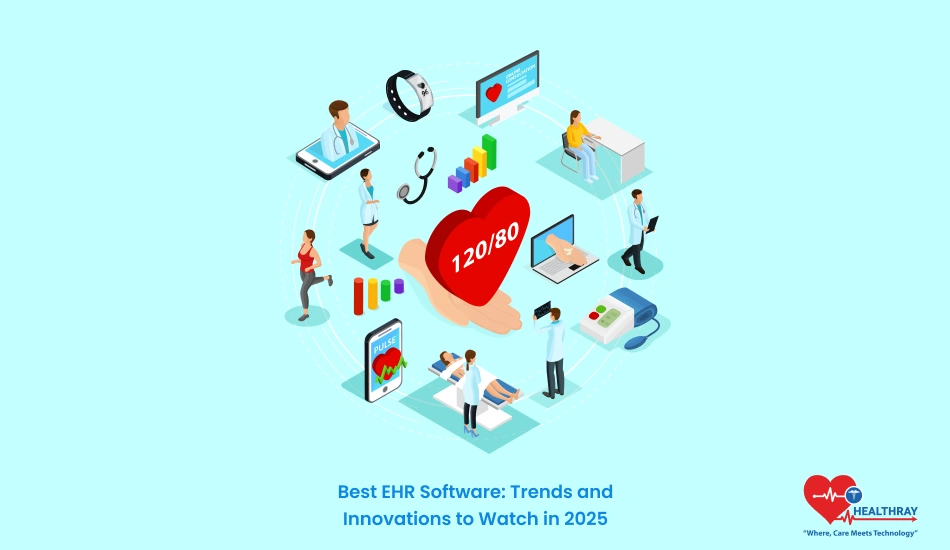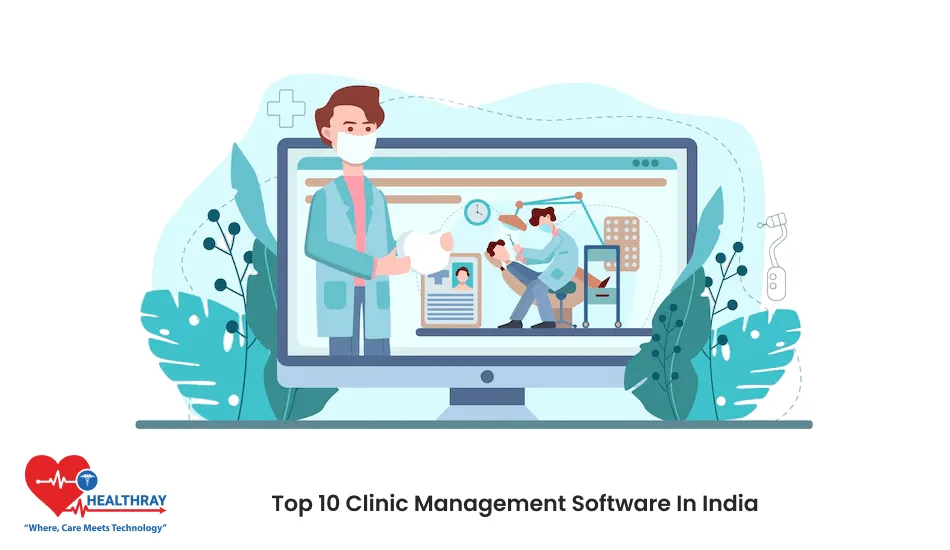Introduction
Health care is fast evolving with EHR at the heart of all that’s happening. Thus, for these reasons, the IT managers, software vendors, and health providers need to be refreshed by the best EHR solution as well as the new innovation in proper service delivery with excellence in good care and success in the same area.
Unlike just patient record keeping, EHR Software of 2025 emphasizes many other trends. New trends like AI-based diagnostics, inclusion of telemedicine, and enhanced data security generally reshape how such systems function. Whichever activity – whether it be patient engagement, operational efficiency, or data security – the proper reading of these developments can aid you in acquiring the right software that will suffice your needs.
In this report, we walk through the leading EHR systems that will steer the way for 2025-from the market’s largest companies, such as Healthray and EMRSoftware.AI, down to more flexible cloud solutions for a smaller vision in medium-size practices. This article also surveys critical innovations, from AI/machine learning as well as to mobile patient engagement that will require healthcare providers to change their means of working using EHRs in the coming future.
Top EHR Software Options for 2025

EHR software selection is not something that fits all. Practices differ from one large hospital to small clinics and specialist providers. By 2025, there will be only a few that will top the list depending on their unique strength and adaptability to emerging trends in healthcare.
Healthray Systems
Healthray is still one of the favorites of the major hospitals and healthcare networks. It is very well known for its wide features and customization abilities, which can allow facilitation of patient management to billing under the same roof. As Epic emphasizes interoperability, it works fairly well with other software in healthcare departments for smooth data sharing. For healthcare IT managers as well as large organizations, Epic analytics helps them unveil what’s going on about patient care and operational performance. Healthray is a bit too big for smaller practices and the cost is relatively high but, in general pretty strong.
EMRSoftware.AI
The second leading contender of course is EMRSoftware.AI who boasts having the highest rank of friendliness with scalable design. Most recently this EMRSoftware.AI upgrade improved more effectively functionality with any system. Realtime access of the patient medical history is made possible by EMRSoftware and well-configured as well for use with systems or single clinic-based hospital. Known for flexibility, EMRSoftware.AI offers virtual care tools, patient portals, and data analytics that prove to be beneficial to providers and patients. Another feature that data security has earned maximum importance since it is the next rising site for cyber threats with regards to healthcare data.
Bigscal Technologies
Bigscal Technologies suits more minor clinics or cloud-based, offering with core functionalities such as appointment scheduling, medication prescription, and billing at very affordable rates. More than that, with mobile integration in the system provided by Bigscal Technologies, there is easy access of information by any patient. With this end in view, not only with an intuitive interface, but flexible pricing, it stands as one of the most favored minor clinics.
Key Trends and Innovations to Watch
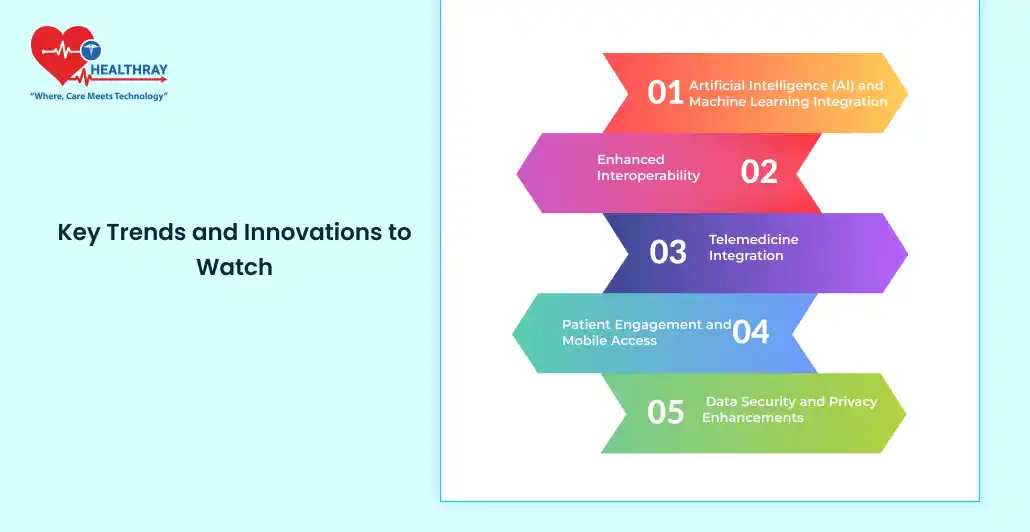
EHR systems are to remain there forever within the health sector. The current year 2025 brings many new developments with it accompanied by new additions to the EHR technologies which make matters different, not merely in terms of performance by a health working service provider but even for access and participation by a patient about health matters. Some of the top trends and innovation set to define the next level for the next EHR land within this current year are:.
Integration of Artificial Intelligence and Machine Learning
All these features mean that AI and machine learning are now increasingly influencing healthcare: providers analyze huge patient data to mark trends, predict future risks, and develop customised treatment plans. Systems that incorporate AI can also automate more routine tasks, for example, billing or data entry and automatically notify the clinician regarding potential medical dangers based on the patient’s record. For example, a machine learning algorithm could make inferences over a period of time on potential drug-drug interactions or predict the amount of time a patient may require to recover from an illness for improving operational safety and efficiency of healthcare.
Improved Interoperability
With the number of healthcare providers and systems that are now using digital records on the rise, it has now become increasingly urgent to call for interoperability. The coming year from 2025 will be easier to access patient information across different platforms and more diverse healthcare providers because of the growing EHR systems that are able to meet the interoperability test. It simply means fewer redundancies, better-coordinated care, and, of course, a healthier ride for patients as they are transferred from specialists to other healthcare settings.
Integration with Telemedicine
EHR systems would complement telemedicine in the aspect of use by being organically integrated with virtual care tools. Patients would always want the right to access their providers easily and that’s what telemedicine has made possible. Many EHR systems probably will be fitted with built-in telemedicine functionalities in 2025 so doctors can make video consults available complete history of care with the patient.
This integrates access to care being delivered for patients who reside at a distance or in an underserved area, and even provides remote monitoring for patients
Patient Engagement and Mobile Access
Patient engagement tools are becoming capable of including most innovation offered by EHR platform within patient portals and mobile apps, which allow patients to manage their access to their health information anywhere at any given time. Patients can see their lab result, schedule an appointment, or converse directly with providers all through their mobile device. Such access empowers patients to become engaged drivers in their own care processes. These applications can also improve compliance to treatment as reminders of medications, visits for follow-ups, and lifestyle changes are constantly brought to the patient’s mind.
Data Security and Privacy Improvements
Health care data breaches are likely to remain a highly salient issue for the foreseeable future. By 2025, EHRs will use far more mature security features, including multi-factor authentication, blockchain to create tamper-proof data records, and much stronger encryption protocols against attacks on patient information. These steps are really important, given the increasing number of patient data being stored in the cloud available for not just healthcare providers but potentially cyber threats. The strength of security protects patient data from unauthorized access, compliance, and even protects against HIPAA violations.
How These Trends Will Impact Healthcare?
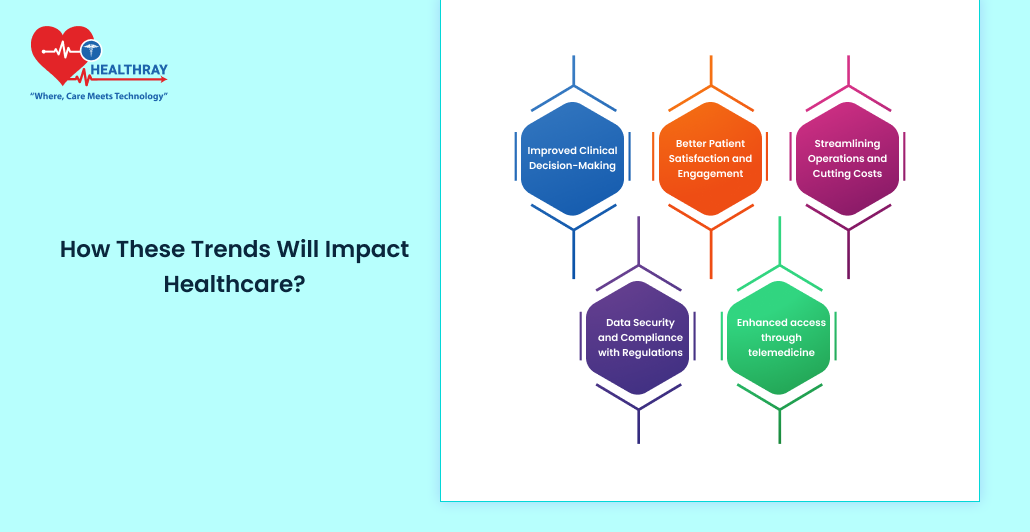
EHR technology advancement, as witnessed in 2025, is not just the making of systems smarter but health care itself. From operational efficiency to better patient care, here is where these trends would really make the difference.
Improved Clinical Decision-Making
With AI and machine learning coming into EHR Hospital Systems, data access will be fast, relevant, and of instant insight. That means better medical histories, patterns, and potential risks analyzed using AI ensure that healthcare providers can make more accurate diagnoses and provide treatment that will eventually lead to improved patient outcomes, faster workflow with less manual processing of data for healthcare teams.
Better Patient Satisfaction and Engagement
As EHR systems incorporate elements of patient engagement, the mobilization of access by patients to their health information is simplified thereby resulting in higher transparency and trust levels among patients toward their healthcare providers. For instance, a patient can book appointments, review test results, or update/view one’s health record using a mobile app or on his /her own using a patient portal. This enables more significant patient empowerment with closer adherence to treatment plans with better adherence, and satisfaction about care.
Streamlining Operations and Cutting Costs
The well-integrated EHR system allows telemedicine and mobile access, which automatically free the clinician of administrative burdens. Automated workflows from billing, appointment scheduling, and patient record management free health staff for direct patient care. For healthcare administrators, it ensures cost savings with more efficient operations. More so, no clinic can attend to a lot of patients and yet provide top-quality service; this is an issue for small practices.
Data Security and Compliance with Regulations
Where cyber threats are increasing, advanced data security measures are the need of the day. Advanced EHRs, including encryption, multi-factor authentication, and blockchain, ensure that the data pertaining to patients are completely secure and tamper proof. Making providers HIPAA and other regulatory compliance-bound secures the providers from liabilities arising out of resultant data breaches. This brings both providers and patients added safety and stability into health data management.
Enhanced access through telemedicine
Increased adoption of telemedicine in EHRs contributes to increased access. Patients living far from city centers or even patients in rural underserved settings will be able to see a specialist without moving physically, while their providers monitor all the patient data during a telemedicine visit. This will improve access and open avenues for more continuous followup and management for chronic diseases which can significantly improve the quality of life of a patient.
Factors to consider while selecting an EHR in 2025
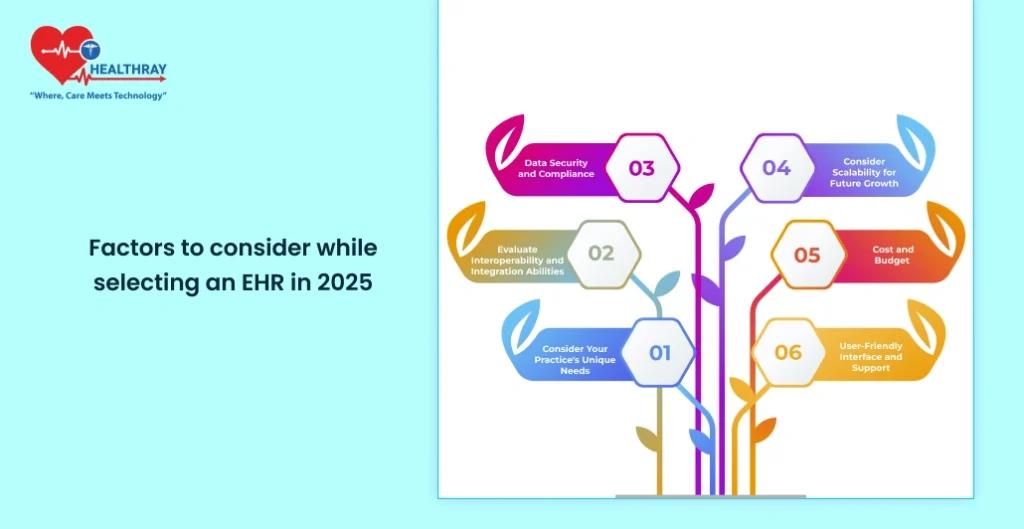
This means that with the many innovations made in the EHR technology, the selection of an appropriate system to be employed by your health care practice in 2025 requires caution. The primary considerations here are some factors that one should be watchful of in determining an EHR that best suits your organization’s needs and objectives.
Consider Your Practice’s Unique Needs
All health care practitioners have varied requirements. It would be more attractive to large hospital systems because it offers a tool for deep data analytics, integration at the departmental level, and customized reporting, whereas a small clinic would most likely opt for an easy-to-use, low-cost system that can do record-keeping and management of patients. Begin by determining what your practice specifically needs and then choose an EHR that satisfies that: workflow simplicity, telemedicine capabilities, or specialty-specific functionalities.
Evaluate Interoperability and Integration Abilities
EHR systems should be interoperable since information about patients is shared between various platforms and facilities, and it should be coordinated by healthcare providers. It will be a good justification to choose an EHR if it has proper interoperability with other systems, while further integration with other healthcare technologies, including imaging software, laboratory systems, pharmacy platforms, and among others, is also possible. A highly interoperable EHR will promote better patient care since it offers quick access to all possible comprehensive patient records.
Data Security and Compliance
Data security and compliance will be the keys in today’s health environment. Think about EHR systems. They have very strong security-related capabilities, such as multi-factor authentication, data encryption, and regular updates on compliance that respect HIPAA and other requirements. A system with all this security protects not only patient information but your practice from potential data breach liabilities.
Consider Scalability for Future Growth
If you know your practice is going to expand someday, choose an EHR that will scale with your needs. For example, cloud-based EHRs are very scalable; you can simply add new users or expand on capabilities without major revamps. Scalability is especially helpful for small practices or those expecting a lot of patient volume, as it gives you flexibility to grow without having a costly system overhaul.
Cost and Budget
The costs of implementing an EHR and maintaining it range from a relatively low amount to very high figures. The most common pricing models are subscription-based, per-provider charges, and support costs; therefore, finding a system which is within a budget is one of the options. More costly systems may yield later returns when they offer benefits such as making operations streamlined, thereby improving efficiency.
User-Friendly Interface and Support
EHRs should make work easy, not difficult. An interface that is easy to understand and use makes the learning curve easier for the staff and will reduce the interruptions in the workflow at the time of implementation. Additionally, assess the level of customer support available from the vendor. This can include training materials, live support, and maintenance of the system. A good support team makes all the difference, especially at the time of implementation.
Conclusion
The future of healthcare hangs in the balance on the tip of the EHR technology advancement horizon and newly innovative happenings in Hospital Management System, holding great promise for the year 2025. Since EHR advances through developments in AI, improvement in interoperability, integration with telemedicine, and improvements in security, it is more empowered than ever for healthcare providers to improve patient care and streamline operations. Well, undoubtedly these innovations are of great worth, but it is not easy to choose the correct EHR and Hospital Management System.
